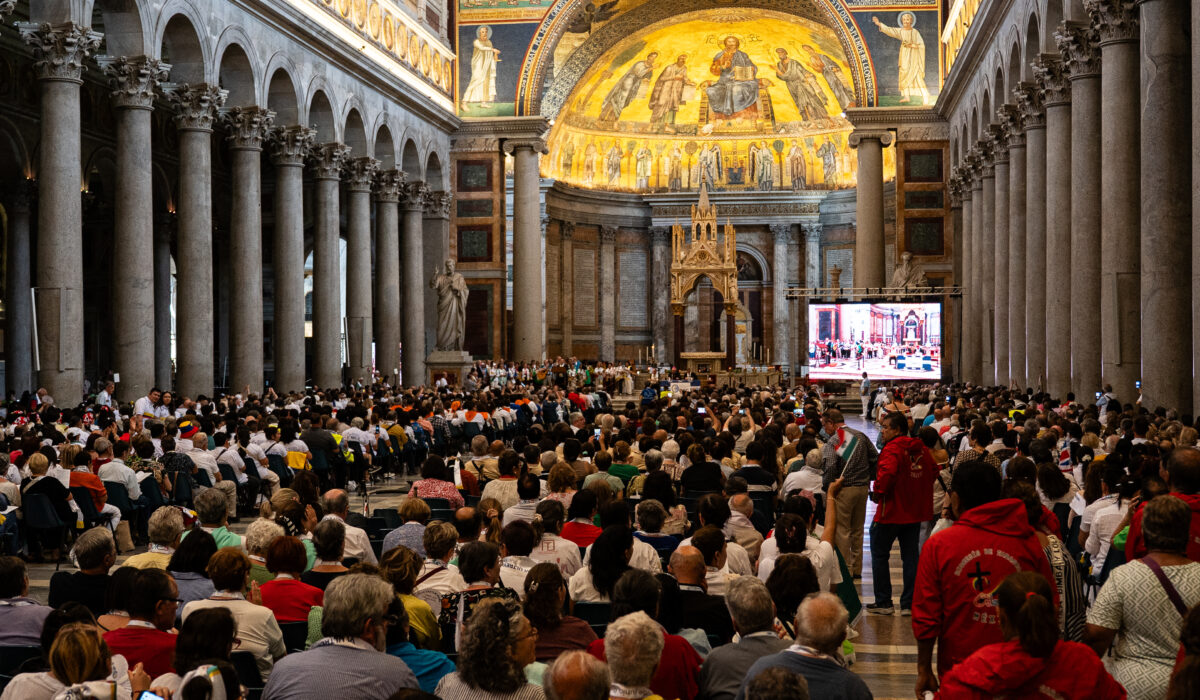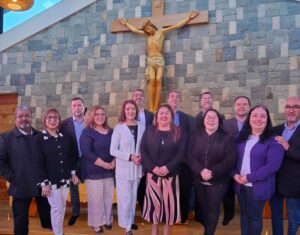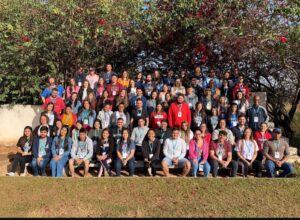“Who are you and where do you come from? How many are you and what secret power has brought you together today in Rome?” With these words, Paul VI began his address to the cursillistas gathered for the First World Ultreya in 1966. These same words could well have opened the Sixth World Ultreya that we experienced just a few weeks ago in the Basilica of St. Paul Outside the Walls.
Many of us traveled to Rome, the heart of the Church, with a deep desire to experience a moment that would mark our lives as Christians and Cursillistas. The Eternal City welcomed us, in the context of the Jubilee of the Movements, to unite cultures, languages, and peoples under one faith and one charism. And what better place than next to the remains of our patron, St. Paul: the tireless evangelizer, the universal missionary, the apostle passionate about Christ.
The Ultreya was a great gathering where people and languages merged into one language: that of joy and friendship. A deep, hopeful, and contagious joy marked every gesture and every word. It was the joy of knowing that we are on a journey, of sharing, as friends, the certainty that this movement continues to bear fruit among young and old, men and women, priests and laypeople, united by the same experience of faith and community. A Movement that, as our president reminded us in his speech, listens, discerns, and walks together in this time of grace.
This Ultreya left us with the deep certainty that we are not spectators, but a living Church on the move. Not a cold institution, but a family that walks, transforms itself, and allows itself to be led by the Spirit to serve the Charism with creative fidelity. Called to live our “fourth day” as true witnesses of the Gospel. Witnesses who proclaim that with Christ all things are possible, that Christ and I are an absolute majority.
The testimonies we heard were clear and moving: lives transformed, given, committed. Young people—and not so young—who encouraged us to continue living the Gospel day by day, in our own square meter, with passion and consistency. As Pope Francis said at the National Congress of the Laity in Spain (2020):
“Do not be afraid to take to the streets, to enter every corner of society, to reach the limits of the city, to touch the wounds of our people… This is the Church of God, which rolls up its sleeves to go out and meet others.”
And if there was a moment that sealed this experience of communion and sending forth, it was the final Eucharist. To experience it as the culmination of the World Ultreya was to experience the heartbeat of the universal Church. There we communed not only with Christ, but with brothers and sisters from all over the world who share the same fire: that of knowing themselves to be cursillistas and sent forth. Before the altar and above the tomb of the apostle of the Gentiles, we discovered ourselves to be apostles of the first proclamation, called to make Christ present in every corner of the world.
That was not just another Mass. It was a missionary impulse, a renewed certainty that Christ is counting on us to set hearts on fire. It was a liturgy where cultures and accents merged into one voice: that of the People of God who celebrate, who give themselves, who go forth. It was a moment of grace in which the cry “De colores!” became a prayer, and the sharing of the Bread reminded us that only through lived love can the Good News be proclaimed with power.
For all we have experienced, today we respond with joy to the words of Paul VI:
We are Cursillistas and we come from all over the world, driven by the Holy Spirit, to live intensely the pilgrim spirit that shapes our method. We have come so that our hearts may be imbued with the living faith of the first Christians in holy Rome; to recognize in the Pope the living presence of Christ; to know that we are an active part of the Church; and to allow ourselves to be set ablaze by the fire of the Spirit, which renews the Church in its essence, in its movements, and in its way of living the Gospel.
Forward, Cursillistas, Ultreya et suseia.





